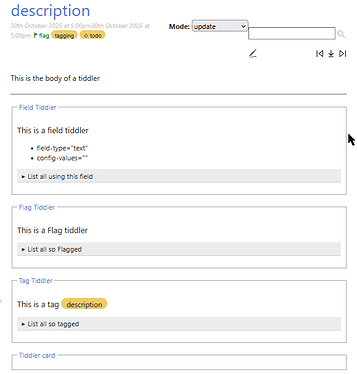Thanks for filling in the missing connection, @Scott_Sauyet!
Indeed, when a field houses a relationship that is in a sense bigger than (or just not neatly subordinate to) either of the component tiddlers, then the implementation of a third tiddler to function as the relational bridge/glue makes a great deal of sense. Genealogical relations are a great case in point. (And I love the granular recursive possibilities of having a tiddler connecting Person1 as a witness to the event of a ceremony whereby the relation of A to B was formalized, etc. where templates in A and B reach into such relations to show the connections…, and maybe our web picks up on another tiddler in which a diary entry by Person2 serves as evidence that [Person1 witnessed the union of A and B], etc., though doubt was in turn cast on that diary entry by… [etc.])
Having a relation-holding tiddler would of course not possibly make sense for most bibliographic field-value pairs such as:
bibtex-year: 2021
bibtex-pages: 188
bibtex-LCCN: 2038748676
bixbtex-series: Emerging Research
bibtex-volume: 54
… where the field-values have little to zero “there” there across records with the same value (let alone the same value across multiple fields, as when 54 might be the volume value for one tiddler and the pages value for another!)
Even when the field-value does have a coherent tiddler-like identity worth linking up (such as author), it would very silly indeed to have a tiddler for the book, a tiddler for the author, and a THIRD logically independent tiddler to store the fact that this-here book was written by that-there person ;). One would never want one’s “grip” on a bibliographic record (say, in porting it from one wiki to another) to leave behind info that has this “card-catalog” constitutive relation to the tiddler’s content.
Still, one might want a relationship tiddler for something like (say) citation connections or special-purpose notes. (The fact that brown2024 cites mingus2019 certainly is “baked into” the brown book, but it’s not a “core” data point, and it wouldn’t scale well to cram all such detailed connections into the primary tiddler!)



